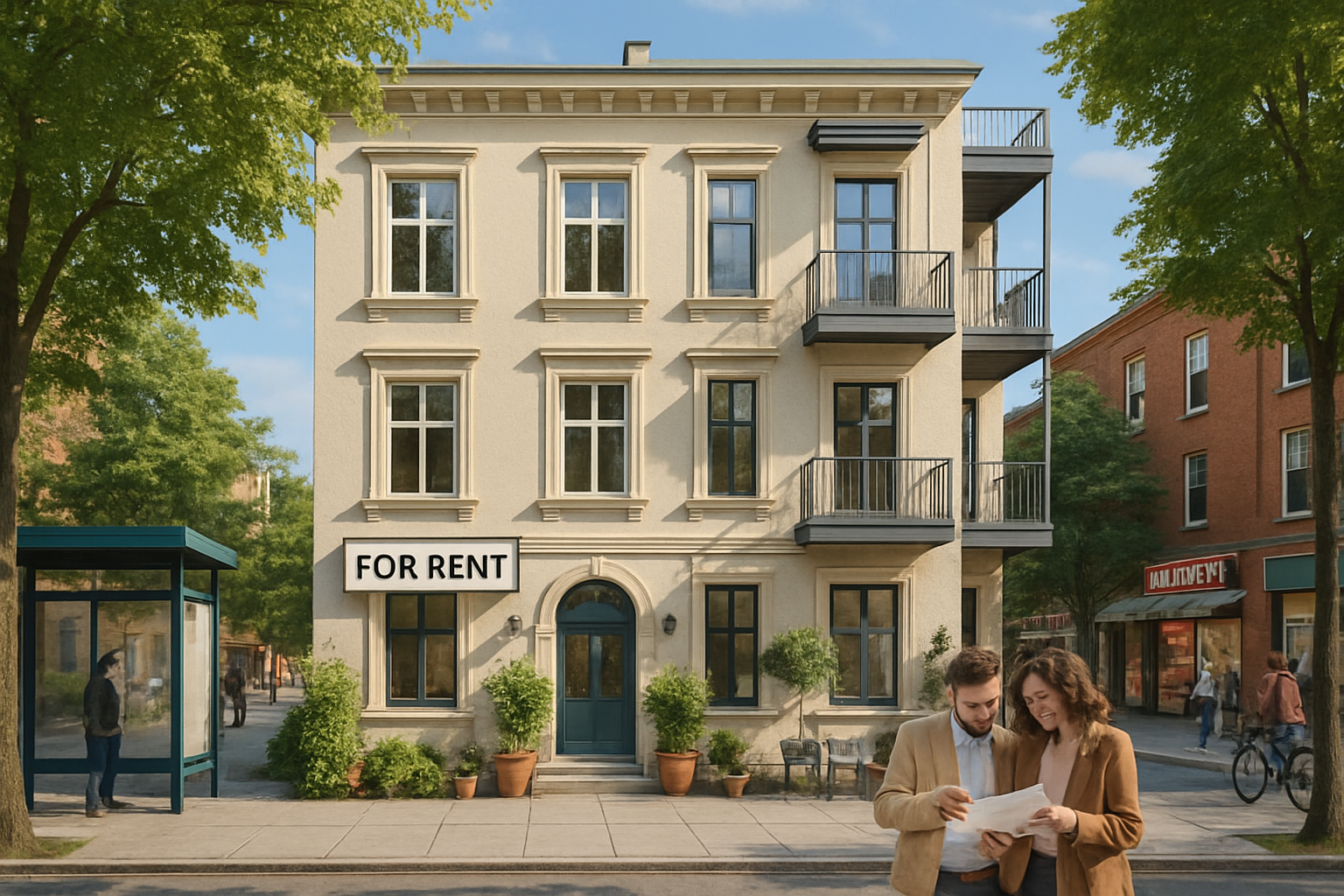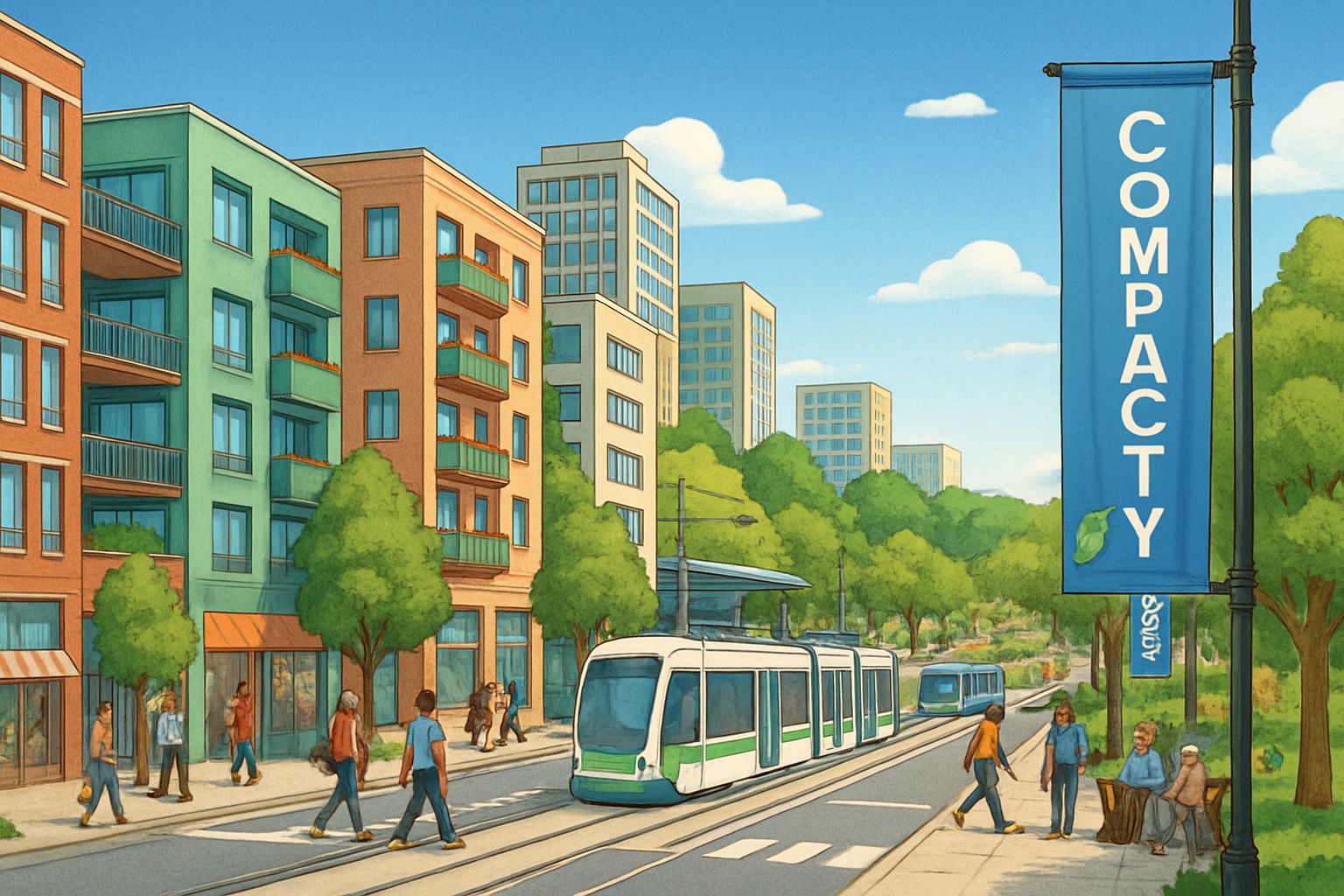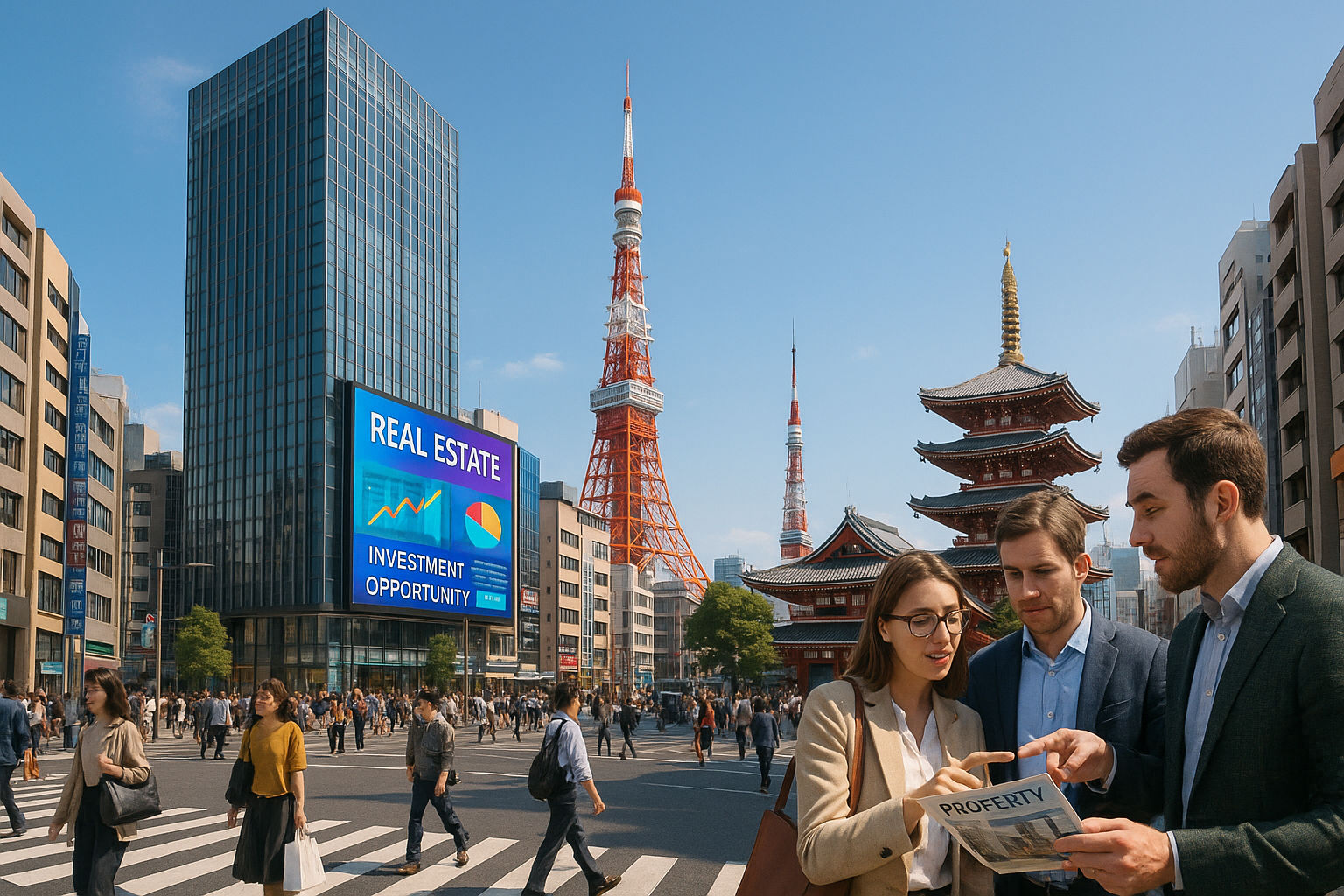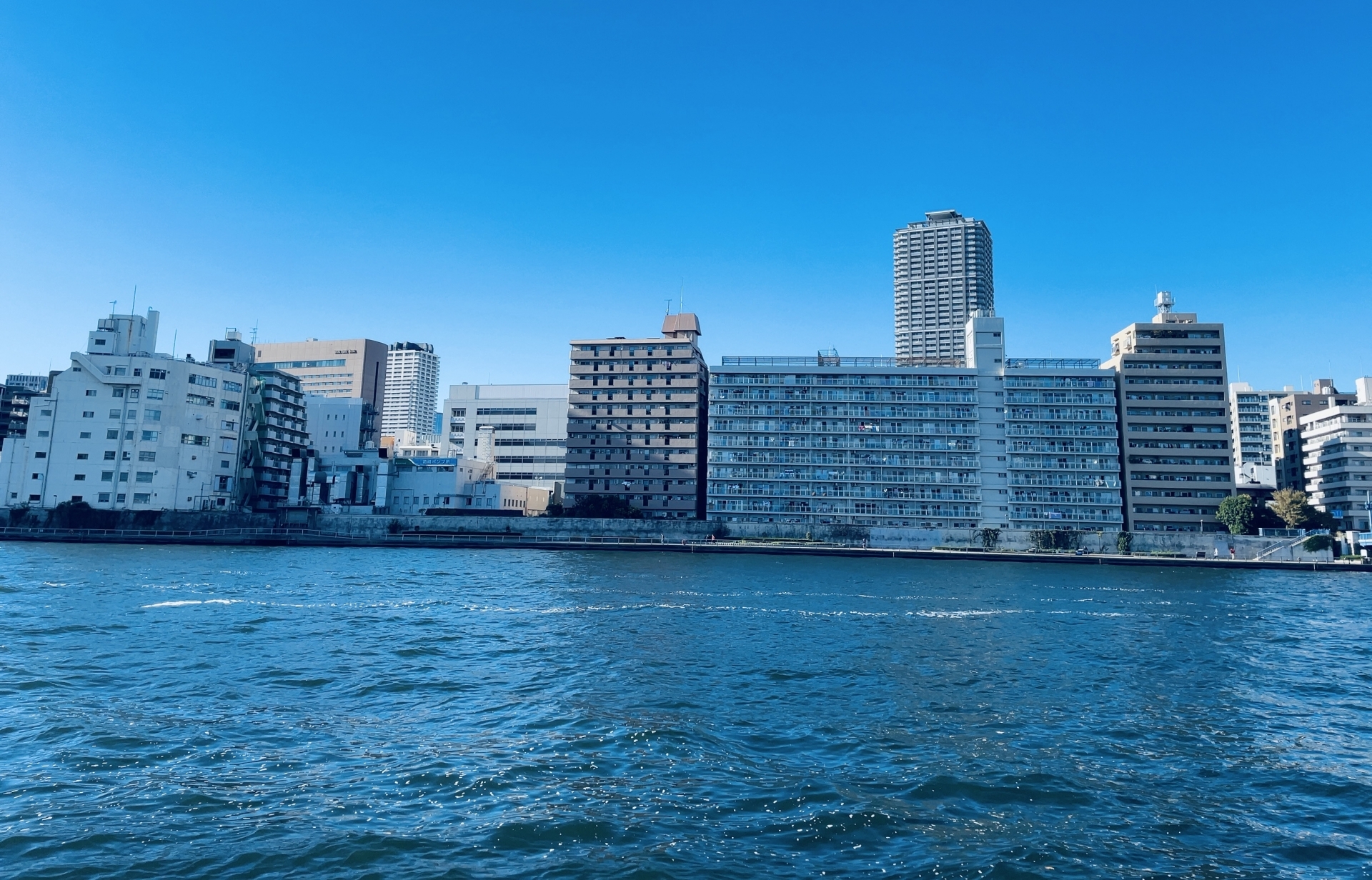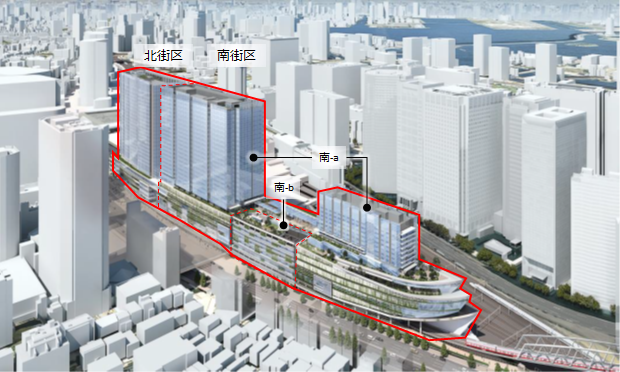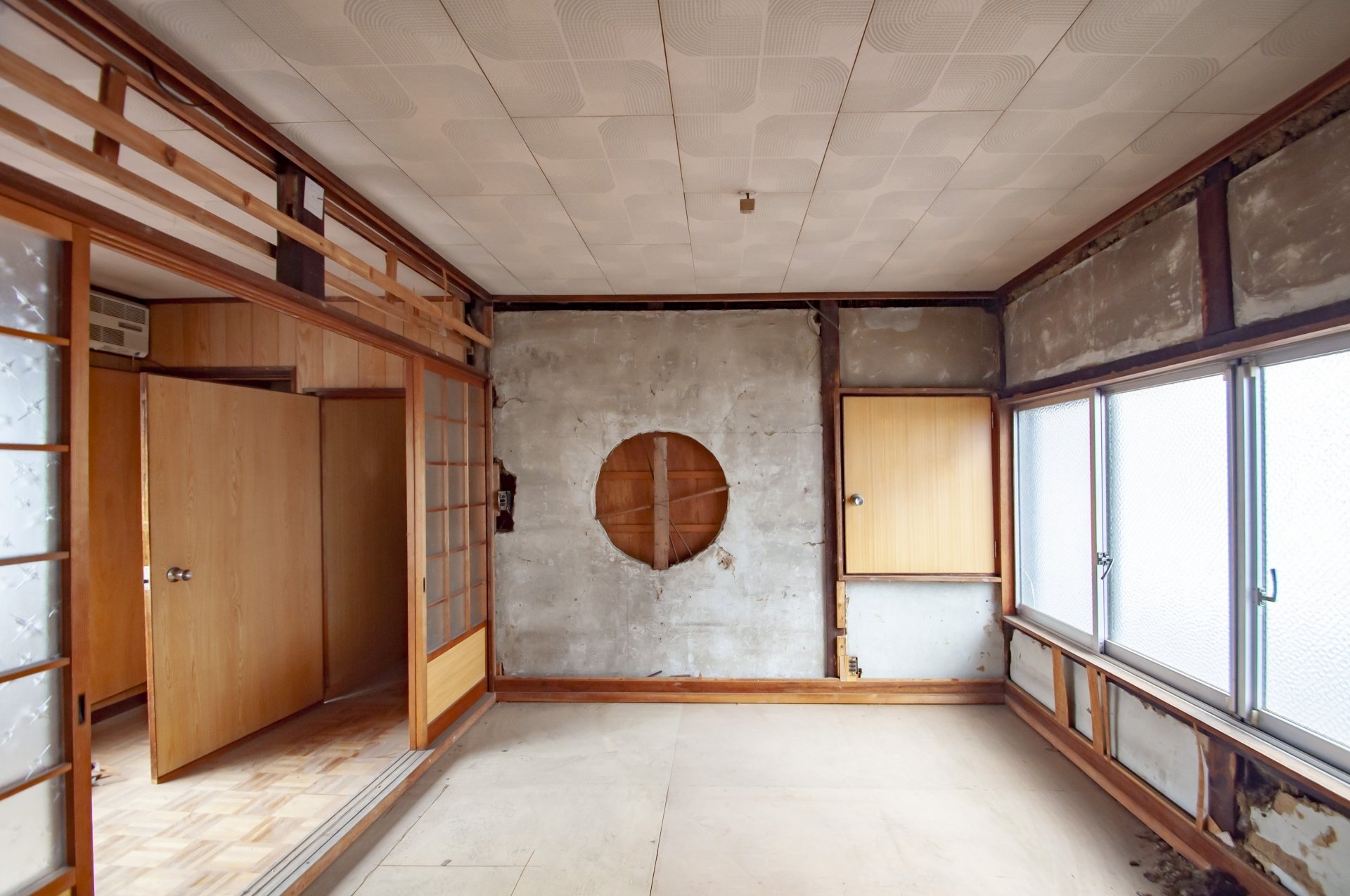Takanawa Gateway Station is scheduled to open in 2020 between Shinagawa and Tamachi stations on the JR Yamanote Line in the heart of Tokyo. The largest redevelopment project in Japan, in which JR East has invested a total of approximately 600 billion yen, will open its first phase of facilities on March 27, 2025 (Machibiraki), and the full scope of the project is being revealed step by step. The full scope of the project is being revealed step by step, beginning with the opening of the first phase facilities (Machibiraki) on March 27, 2025. This article looks at the full scope of this grand project, the transformation of the urban structure it will bring about, and the unique aspect of its coexistence with Japan's modernization heritage.
Where History and the Future Intersect - Takanawa's Geographical and Historical Background
The Takanawa area has historically served as the gateway to Edo (present-day Tokyo) since the Edo period (1603-1868) as "Takanawa Okido. Furthermore, during the Meiji period (1868-1912), the area played an important role in the opening of Japan's first railroad.
In 1872, when Japan's first railroad was built between Shimbashi (present-day Shiodome) and Yokohama (present-day Sakuragicho), a 2.7-km stretch between the northern part of present-day Tamachi Station and the southern part of present-day Shinagawa Station was built on an embankment over the sea and the tracks were laid on top of it, a method that is rare worldwide. This is the " Takanawa Chikkei " ( embankment).
The Takanawa embankment, with its distinctive structure of horizontally fabricated stone walls on the sea side (east side) at an incline of about 30° and vertically or rotated at 45° on the mountain side (west side), was used for about 50 years as a symbol of innovation by combining civil engineering technology and Western technology in the early Meiji period, and then disappeared with the reclamation of Tokyo Bay It disappeared with the .
After a long period of time, in April 2019, part of the Takanawa Chikkyo was discovered during construction around Shinagawa Station, drawing attention to this important cultural heritage that served as the foundation of Japan's modernization. This discovery raised the major issue of balancing modern development and historical preservation.
Redevelopment Concept as a "Global Gateway
The development concept for Takanawa Gateway City is " Global Gate way. This concept has two meanings: it serves as a hub for international exchange, linking Tokyo to the rest of the world, and it also refers to a time axis that links the past, present, and future.
The project, led by East Japan Railway Company, is not just a commercial or office development, but is positioned as a "testing ground for a rich life 100 years from now," aiming to create a new urban development that integrates the city and its history, people and nature, and technology.
The total area of the development district is approximately 9.5 hectares, with a total floor area of approximately 845,000 m2, making it the largest redevelopment project ever undertaken in central Tokyo. On this vast site, five buildings will be constructed: four high-rise buildings and one low-rise cultural and creative facility.
Overall view of the redevelopment project: a multi-functional city consisting of five buildings
Takanawa Gateway City will consist of the following five major facilities
-
THE LINKPILLAR 1 (NORTH/SOUTH): A symbolic twin tower located in front of Takanawa Gateway Station. It houses high-grade offices, the TAKANAWA GATEWAY Convention Center, a large-scale convention facility, the JW Marriott Hotel Tokyo luxury hotel, and the Newman Takanawa commercial facility. The skyscraper is approximately 30 stories above ground and 160 meters high.
-
THE LINKPILLAR 2: A large-scale complex building adjacent to Sengakuji Station. In addition to flexible office floors, commercial facilities, clinics, and fitness facilities, an energy center and district heating and cooling system will be installed to provide high environmental performance energy to the entire city.
-
TAKANAWA GATEWAY CITY RESIDENCE: Premium residences offering international standard high-rise and terrace-style units. In addition to 24-hour multilingual concierge service, an international school (CIS accredited and IB program) is also available.
-
MoN Takanawa: The Museum of Narratives: A cultural complex with a light and green theme. It will be a center for cultural outreach offering a variety of programs, including live performance spaces, exhibition rooms, and multipurpose spaces.
-
Takanawa Gateway Station: A new station on the Yamanote Line that will open in 2020. A multipurpose space with movable lawn furniture called "Eki Park" will be created within the station, which will be used for a variety of events and interactions.
In addition to these facilities, the "Area Information & Mobility" function will support the entire city with services that utilize the latest technology, such as the introduction of automated mobility and a charging system that uses environmentally friendly renewable energy.
Takanawa Gateway City as a Smart City
Takanawa Gateway City will also function as an advanced "Ekimachi Smart City. This is a new smart city model led by JR East, the railroad operator, that connects stations and surrounding urban areas with data to provide integrated services.
Specifically, real-time information collection and analysis is achieved through the linkage of an "urban OS" and a "railroad OS," which integrates data from the railroad and the city. Furthermore, a 2D+3D digital twin will be constructed, enabling simulation and management in a virtual environment linked to the actual urban space.
In addition, through a portal site called "TAKANAWA GATEWAY CITY API," various data APIs are provided to promote the development of new services and applications.
Based on these technological foundations, a variety of smart city services will be developed, including information provision for visitors, store reservations, mobile ordering, off-peak incentives, digital signage, centralized event information, spatial staging, on-demand mobility, and more.
Development Schedule and Phased Opening Plan
The development of Takanawa Gateway City is being undertaken in phases. The main schedule is as follows
March 2020: Takanawa Gateway Station will open in advance March 27, 2025: THE LINKPILLAR 1 and its surrounding facilities will open as "Machibiraki", and Takanawa Gateway Station will be fully opened Fall 2025: Newman Takanawa commercial facility will be fully opened Spring 2026: THE LINKPILLAR 2 and MoN Takanawa, and TAKANAWA GATEWAY CITY RESIDENCE will open. FY 2027: The Takanawa Chikkei Bridge No. 7, a designated national historic site, and the park area will be preserved and opened to the public.
This development will create a new town where approximately 20,000 office workers will work. In addition, approximately 200 stores are scheduled to open in Newman Takanawa, which is expected to be the largest commercial facility in Lumine's history.
Preservation and Utilization of Takanawa Chikujiki - Balancing Development and Cultural Heritage Preservation
One of the most notable aspects of the Takanawa Gateway City development is the plan to preserve and utilize the Takanawa Chikkyo Embankment, a valuable railroad structure from the Meiji era.
In September 2021, the Takanawa embankment site was designated as a national historic site as the "Former Shimbashi Station and Takanawa Embankment Site. The No. 7 bridge and park portion of this national historic site are scheduled to be preserved on-site and opened to the public, and the signal tower base is scheduled to be relocated, preserved, and opened to the public.
The Minato City Board of Education has described the Takanawa Chikki-teki Ruins as "not only important for Minato City, but also an extremely important modernization heritage in the history of Japan and the world. In particular, the masonry remains near the Seventh Bridge are beautifully reminiscent of the embankment depicted in Hiroshige Utagawa III's Nishikie woodblock prints, and are considered to be of great value as an educational resource.
Initially, there was some debate over whether to preserve or develop the site, but eventually a policy was adopted to preserve and open part of the site to the public, and to pass on to future generations the value of the railroad facilities that supported Japan's modernization. This will create a unique urban space where the latest urban development and historical heritage coexist.
Economic Effects and the Wide-area Shinagawa Area Concept
The development of Takanawa Gateway City is not a stand-alone project, but part of a larger plan to create a "Greater Shinagawa Area" that includes the surrounding area.
JR East aims to create an economic zone that will generate annual revenues of 100 billion yen by integrally developing the area extending from north to south, centered on Takanawa Gateway City, and including the areas around Shinagawa Station, Oimachi Station, and Tamachi Station.
This wide-area Shinagawa area concept also includes plans to link various services using the Suica transportation IC card. For example, Takanawa Gateway City has developed a dedicated application for visitors to the city and is constructing a system that will allow them to use various facilities and services in the area in conjunction with Suica.
In addition, development in the surrounding area is also gaining momentum, with a 100 billion yen development by Sumitomo Realty and Development Company underway across National Route 15. These synergistic effects are expected to enhance the value of the entire area.
Creating New Lifestyles and Businesses
Takanawa Gateway City aims to create new lifestyles and businesses, rather than just a concentration of offices and commercial facilities.
For example, the "TAKANAWA GATEWAY Link Scholars' Hub" will function as a co-creation center where companies, universities, research institutions, etc. collaborate to create new businesses and services, and JR East plans to provide a fund of up to 5 billion yen to encourage joint ventures between resident companies.
In addition, the creation of health care services linked to "smart health stations" and the use of personal health records (PHRs) are also being promoted.
Furthermore, on the environmental front, a variety of initiatives are planned to realize "global benefits. Through the introduction of district heating and cooling systems with energy centers and the use of renewable energy, the city aims to create a sustainable urban space.
International Competitiveness and Challenges
Takanawa Gateway City is expected to contribute to improving the international competitiveness of Tokyo and Japan as a whole.
In particular, the development of large-scale convention and conference functions with a view to attracting international conferences, the opening of the JW Marriott Hotel Tokyo, and the establishment of an international school will strengthen the city's ability to accommodate global businesspeople and visitors.
At the same time, the project must also respond to social conditions that have changed dramatically from those envisioned at the time of its development, such as changes in office demand due to the Corona disaster and the spread of teleworking. The number of visitors to Takanawa Gateway Station has fallen short of initial estimates, and there is a need to increase the number of visitors by providing new value.
In addition, the difficult issue of balancing the preservation and development of the Takanawa Chikkyo Embankment, which was excavated in the process of urban development, was discussed and adjusted over time, and it can be said to have provided one answer to the universal issue of balancing the protection of cultural assets and urban development.
Conclusion: Toward a City of the Future with Diverse Values
Takanawa Gateway City will be fully revealed in phases after the "opening" in March 2025. This redevelopment project is more than just a series of skyscrapers; it is an ambitious project that aims for the coexistence of diverse values: history and the future, global and local, technology and humanity.
Takanawa Gateway City aims to make the land of innovation, where Japan's first railroad line ran more than 150 years ago, a new center of innovation once again. Its success depends not only on its economic success, but also on its ability to create a rich urban space where diverse values and functions can coexist.
We will continue to focus on the future development of Takanawa Gateway City, which will become a new landmark in Tokyo.

Daisuke Inazawa
Representative Director of INA&Associates Inc. Based in Osaka, Tokyo, and Kanagawa, he is engaged in real estate sales, leasing, and management. He provides services based on his extensive experience in the real estate industry. Based on the philosophy that “human resources are a company's most important asset,” he places great importance on human resource development. He continues to take on the challenge of creating sustainable corporate value.

.png)


